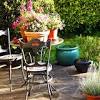
How to Decide What to Plant in Your Raised Vegetable Garden
Spring is the perfect time to start planning your raised vegetable garden. But if you’re new to gardening, you might be wondering what you should plant. There are a few things to consider when making your decision, including the climate you live in, the amount of space you have, and the amount of sunlight your garden gets. Here’s a guide to help you decide what to plant in your raised vegetable garden.
Climate Considerations
One of the most important things to consider when deciding what to plant in your garden is the climate you live in. Certain vegetables will only grow in certain climates. For example, if you live in an area with a short growing season, you’ll want to focus on plants that mature quickly, like lettuce or radishes. If you live in a hot climate, on the other hand, you’ll want to focus on plants that can tolerate the heat, like tomatoes or watermelons. Knowing what kind of climate you have will help you narrow down your options and choose plants that will thrive in your garden.
Space Considerations
Another important consideration is the amount of space you have available for your garden. If you only have a small space, you’ll want to choose plants that don’t take up too much room, like herbs or carrots. If you have a large space, however, you can afford to be more generous with your plant choices. You might want to consider planting larger vegetables like pumpkins or potatoes. No matter how much space you have available, there’s sure to be a plant that’s perfect for your garden.
Sunlight Considerations
Last but not least, you’ll need to consider how much sunlight your garden gets. Some plants need full sun (6-8 hours of direct sunlight per day) in order to grow properly, while others do better with partial sun (4-6 hours of direct sunlight per day). Still others can tolerate shade (2-4 hours of direct sunlight per day). Knowing how much sun your garden gets will help you choose plants that will thrive in those conditions.
There are a lot of factors to consider when deciding what to plant in your raised vegetable garden. But by taking the time to think about things like climate, space, and sunlight, you can narrow down your options and choose plants that will thrive in your particular situation. With a little planning and forethought, you can have a beautiful and bountiful garden in no time!
What should I fill my raised vegetable garden with? The first option for filling your beds is a simple soil mixture. As you may have guessed, this is the simplest route you can take. Fill your bed with a 1:1 mixture of topsoil and compost mix, then lightly combine with a rake or shovel.
What is a good soil mixture for raised beds? The Classic 3-Ingredient Soil Mix
For large raised beds, adjust the amount of vermiculite and peat to one quarter each; the rest is organic compost. You can use perlite or coconut coir as an alternative for vermiculite.
Can I use in ground soil for a raised bed? Because it contains topsoil, garden soil is typically too heavy for container gardens. Instead, it is recommended for in-ground gardens and raised beds. Garden soils can be mixed with soil in the ground using a tiller or shovel to improve the native soil.
How do you fill a raised bed cheaply? Create dig in your garden bed that is ten inches deep and in the center of your raised bed. Layer down a few layers of cardboard, and fill the core with straw bales, leaves, grass clippings, or old twigs. You can use one of these materials or mix them.